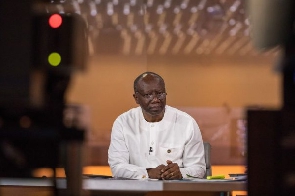Government announced it plans to issue a gross amount of GH¢21,430.00 million for April to June, this year, of which GH¢17,301.00 million will be used to roll over maturities.
A recent Government Issuance Calendar which made this known said the remaining GH¢4,129.00 million is fresh issuance to meet government’s financing requirements.
“Per this calendar, government aims to build benchmark bonds through the issuance of the 91-day and 182-day T-bills which will be issued weekly; the 364-day bill to be issued bi-weekly also through the primary auction with settlement being the transaction date plus one working day; securities of two-year up to seven-year to be issued through the book-building method,” it mentioned.
According to the Ministry of Finance, which issued the calendar, consistent with the Medium Term Debt Management Strategy (MTDS) for 2021-2024, government might announce tap-ins/reopening of other existing instruments depending on market conditions.
For the first quarter of this year, government announced it would issue a gross amount of GH¢22,346.40 million, of which GH¢19,732.64 million was to rollover maturities while the remaining GH¢2,613.76 million constituted fresh issuance to meet its financing requirements.
Also, in March this year, Ghana returned to the International Debt Capital Markets as the first sub-Saharan African Sovereign to issue in United Stated dollars since the onset of the COVID-19 pandemic, achieving a record size in excess of US$3 billion and enhancing its market access through the use of a four-year Zero-Coupon Tranche, which was an innovative market-oriented solution to address post-COVID-19 challenges and improve the cash flow required for debt servicing.
The country’s consistent ability to raise multi-billion-dollar financing and the pioneering use of a four-year zero-tranche was a testament to its hard-won credibility with investors, strong growth prospects and disciplined fiscal consolidation efforts in 2020.
The issuance was two times oversubscribed at its peak; making Ghana the first Emerging Market Sovereign to add a zero-coupon bullet tranche to its bond financing portfolio.
Government aimed to create fiscal space to build the economy back better with that.
A zero-coupon bond is a bond that does not make periodic interest payments during the tenor of the bond, but is sold at a discount to its value at maturity.
Commenting on the bond, Ken Ofori-Atta, then Finance Minister-designate, stated, “This historic bond issuance is a strong signal that investors have confidence in our plan for debt sustainability, economic recovery and growth and that Ghana remains a Pillar of Stability.”
Part of the proceeds was billed to be used for domestic liability management.
“For example, using US$400 million of the zero-coupon bond to refinance domestic debt with an average interest rate of 19% will net Ghana savings of some US$200 million over the four years,” Mr. Ofori-Atta explained.
The proceeds would, alongside conducting liability management, also support the budget deficit by funding growth-oriented expenditures.
The provisional nominal debt stock as at end-December 2020 stood at GH¢291,614.5 million (US$50,829.6 million), representing 76.1 percent of GDP. This ratio included the financial and energy sector bailouts.
Excluding the Financial Sector Bailout, the nominal debt stock as percentage of GDP fell to 71.5 percent.
The composition of the total debt stock showed provisional amounts of GH¢141,780.60 million (US$24,712.94 million) and GH¢149,833.89 million (US$26,116.66 million) for external and domestic debt, respectively, which correspondingly accounted for 48.6 percent and 51.4 percent of the total.
As a percentage of GDP, external and domestic debt represented 37.0 percent and 39.1 percent, respectively.
Ghana successfully raised US$2 billion in 2018, US$3 billion in 2019 and US$3 billion in 2020.
Click to view details



Business News of Wednesday, 5 May 2021
Source: goldstreetbusiness.com

















